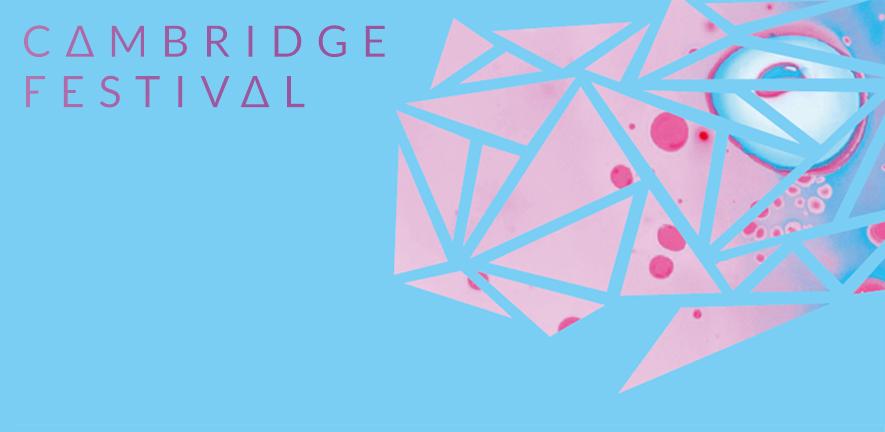
The new Cambridge Festival will take place from 26 March to 4 April 2021, with more than 350 free online events and activities available for people of all ages.
This year the Festival is a virtual one and our Department has nine exciting talks on offer through our YouTube channel. All the talks will be live and followed by a Q&A session with the speaker – just post your questions in the YouTube live chat and we will answer them at the end of the talk.
The talks will also be available on-demand after their advertised start time.
There is no need to register – just head over to YouTube and enjoy!
To keep up to date with all of our news for the Cambridge Festival, give us a follow on Facebook, Twitter and Instagram (@CamBiochem). We will be using the #camfest hashtag.
Signalling between cells: an ancient or a modern phenomenon?
Friday 26 March, 13:00-13:45
Messages between cells are vital for an organism to survive. In this talk, Professor Sarah Lummis explores how some molecules may have evolved to be critical cell signals and describes their roles in the present day. She will also show how understanding their biochemical pathways can explain the actions of some of the most widely-prescribed drugs, such as Viagra and Valium.
Further details are available on the Cambridge Festival website.
Watch the talk on YouTube.
How atomic-level understanding of biology helps us to design more effective drugs
Friday 26 March, 15:30-16:15
Structural analysis of proteins provides us with an atomic view of biological processes, such as catalysis of chemical reactions by enzymes, contraction of muscles, or action of hormones. In this talk, Dr Marko Hyvönen describes how macromolecular structures are determined by X-ray crystallography and how this information can facilitate development of new drugs.
Further details are available on the Cambridge Festival website.
Watch the talk on YouTube.
Endosymbiosis and the cellular partnerships that are powering the planet
Monday 29 March, 13:00-13:45
Complex cellular life represents two or more organisms that merged in the ancient past, for mutual benefit, in a process called endosymbiosis; one cell living inside another. These partnerships are still forming today, such as those of corals with algae that are essential to reef health. In this talk, Dr Ross Waller discusses how life’s diversity is founded on cell partnerships.
Further details are available on the Cambridge Festival website.
Watch the talk on YouTube.
How does electricity power plants?
Monday 29 March, 15:30-16:15
We all know that plants need light to grow and produce oxygen. But what is the light actually used for? In this talk, Dr Paolo Bombelli shows how plants use light to remove electrons from water (producing oxygen as a dangerous waste product), pass the electrons through proteins, and then use the electrons to turn carbon dioxide and water into sugars.
Further details are available on the Cambridge Festival website.
Watch the talk on YouTube.
Pores for thoughts: how do our nerve and muscle cells talk to each other?
Tuesday 30 March, 13:00-13:45
Nerve and muscle cells use a form of electrical signalling to talk to each other. The signals are generated by the opening and closing of molecular pores or channels that control flow of charged ions into and out of the cell. In this talk, Dr Tony Jackson explains how we think the channels work and how their failure may underlie many diseases, including heart disease and cancer.
Further details are available on the Cambridge Festival website.
Watch the talk on YouTube.
Why weigh proteins? From tackling disease to improving crops to learning about ancient civilizations
Tuesday 30 March, 15:30-16:15
Which proteins are present in a biological sample can be a hallmark of disease. In this talk, Professor Kathryn Lilley describes how mass spectrometers (MS), sophisticated weighing scales, are used to reveal abnormal amounts in disease, discusses the use of MS in improving crops to grow in harsher environments, and reveals how MS can give insight into the life of ancient civilizations.
Further details are available on the Cambridge Festival website.
Watch the talk on YouTube.
Lights, Camera, Actin! Exploring the dynamic driver of cell shape and movement in health and disease
Wednesday 31 March, 13:00-13:45
The ability of cells to move and change shape is fundamental to their function and is driven by a flexible and dynamic network of filaments composed of the protein actin. In this talk, Dr Jonathan Gadsby (Gurdon Institute/Department of Biochemistry) introduces the intriguing variety of roles played by the actin network, and explores how it can contribute to and be targeted in different diseases.
Further details are available on the Cambridge Festival website.
Watch the talk on YouTube.
NMR, drugs and targets
Wednesday 31 March, 15:30-16:15
In this talk, Dr Bill Broadhurst and Dr Daniel Nietlispach discuss nuclear magnetic resonance (NMR) spectroscopy applications. Bill explores soil bacteria and how they may hold the key to solving the problem of antibiotic resistance. Daniel then discusses how understanding how human sensor proteins work and interact with drugs can help us to develop new methods to tackle disease.
Further details are available on the Cambridge Festival website.
Watch the talk on YouTube.
A microscope on steroids: using cryogenic electron microscopy to image biological molecules
Thursday 1 April, 13:00-13:45
Using electrons instead of light in cryogenic electron microscopy. In this talk, Dr Amanda Chaplin discusses how scientists can use electrons to image and obtain 3D pictures of biological molecules, such as proteins and DNA, that may help us to understand how our bodies work.
Further details are available on the Cambridge Festival website.
Watch the talk on YouTube.
